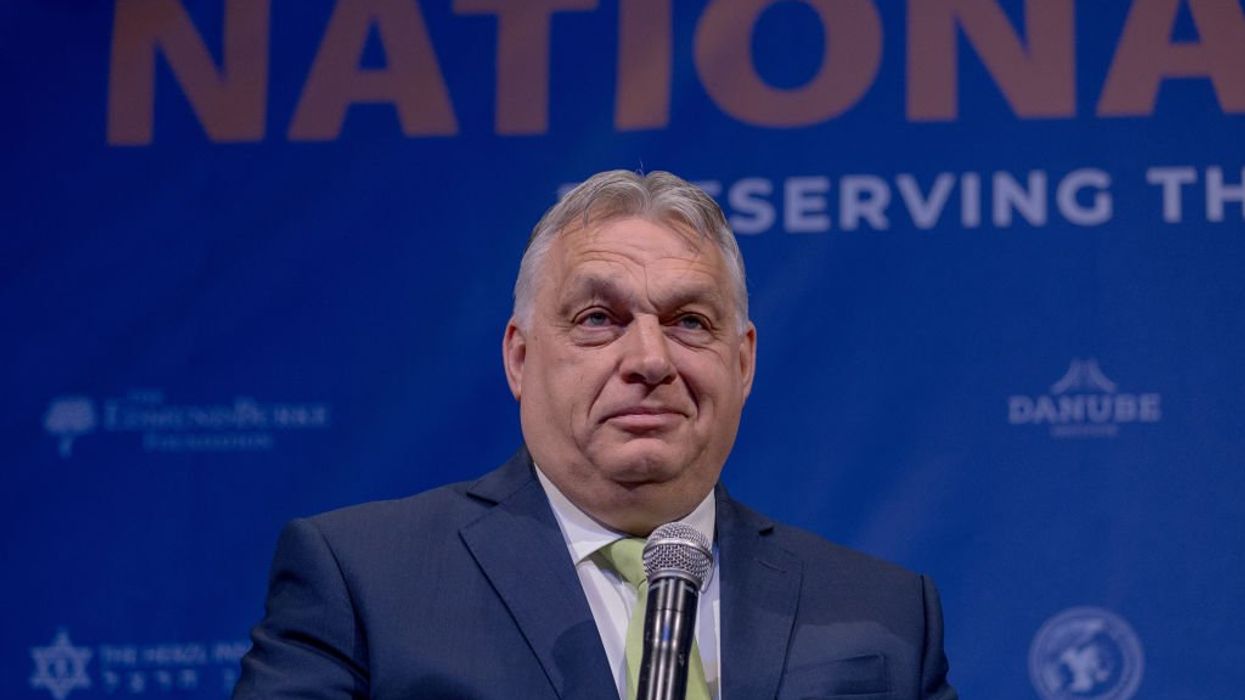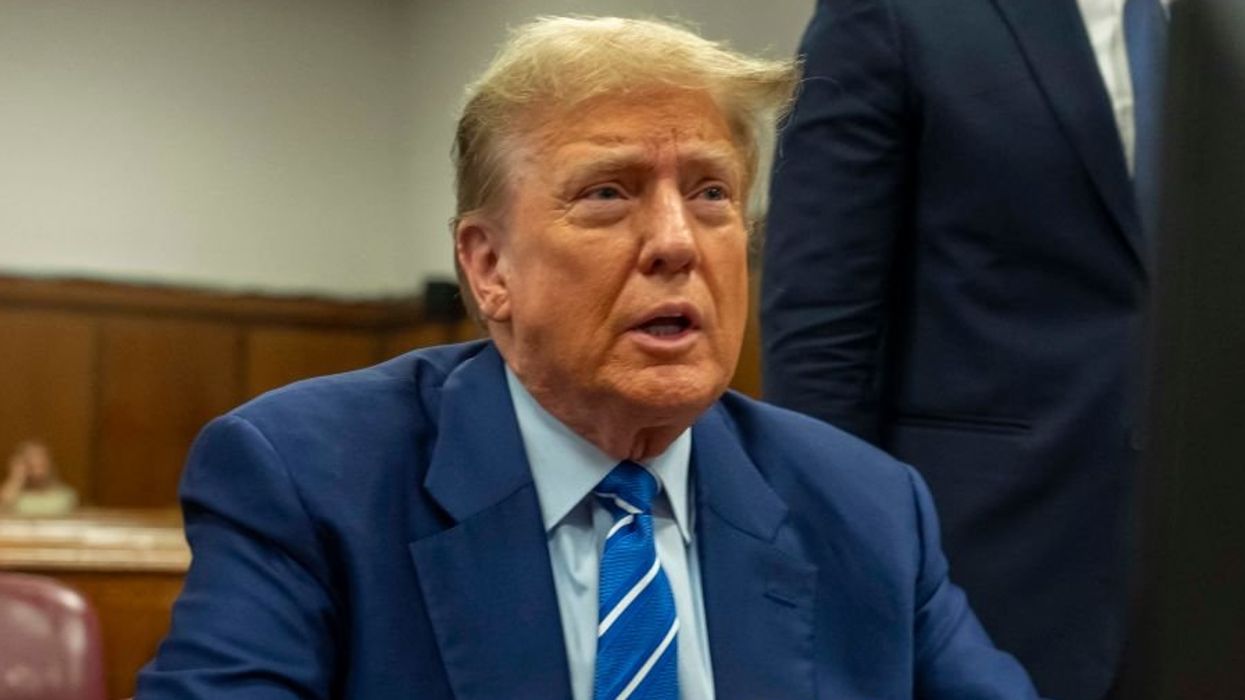
© 2024 Blaze Media LLC. All rights reserved.
Remains of Jonestown Massacre Victims Found 35 Years Later in Abandoned Funeral Home
August 08, 2014
DOVER, Del. (TheBlaze/AP) —Thirty-five years ago, more than 900 people died in a suicide-murder in Jonestown, Guyana, after drinking a cyanide-laced punch. This week, some of those remains were discovered in an abandoned former funeral home.
Families and funeral directors scrambled to claim and bury the hundreds of bodies after the incident in 1978; some arrived back in the U.S. at Dover Air Force Base, some were cremated and others were buried in a mass grave in California.
But officials revealed Thursday that not all had been brought to a final resting place. The cremated remains of nine Jonestown victims were discovered in a decrepit, now-shuttered funeral home in Dover, Delaware.
 The site of the former Minus Funeral Home in Dover, Del., Thursday, Aug. 7, 2014, where police say the cremated remains of nine victims of a 1978 mass cult suicide-murder in Jonestown, Guyana were discovered. (AP Photo/Evan Vucci)
The site of the former Minus Funeral Home in Dover, Del., Thursday, Aug. 7, 2014, where police say the cremated remains of nine victims of a 1978 mass cult suicide-murder in Jonestown, Guyana were discovered. (AP Photo/Evan Vucci)
"All the survivors in touch with me are traumatized because that door had been closed," said Jonestown survivor Laura Johnston Kohl, now a retired teacher from San Diego.
"Whatever journey the ashes took in the U.S. is secondary. The first issue is how do we settle it to make sure the ashes are where they belong ... at Evergreen where everybody is," she said, referring to the cemetery that is the site of the mass grave.
Hundreds of children and a U.S. congressman died at Jonestown, and 911 decomposing bodies were brought to Dover Air Force Base, home to the U.S. military's largest mortuary.
As the bodies were identified, the military asked about a half-dozen local funeral homes to help the families make arrangements.
 The remains of Jonestown victims were transferred to Dover Air Force Base in 1978. (Image source: Wikipedia)
The remains of Jonestown victims were transferred to Dover Air Force Base in 1978. (Image source: Wikipedia)
But last week, the Dover police were called by the owners, a bank, of a dilapidated funeral home to inspect suspicious containers that were found on the site. The remains of nine Jonestown victims were found in the former Minus Funeral Home in Dover, among 33 containers of remains. The ashes of the nine were found neatly packaged and clearly marked, with the names of the deceased and place of their death included on accompanying death certificates, the Delaware Division of Forensic Science said Thursday. No names were released publicly because relatives hadn't been notified.
The 24 other containers were of marked, identified remains, and five containers of remains they could not immediately identify, said Kimberly Chandler, spokeswoman for the Delaware Division of Forensic Science.
The discovery reopened wounds of the decades-old incident that came to be widely known as the "Jonestown Massacre," stemming from the informal name for the Peoples Temple Agricultural Project formed by the Peoples Temple, an American religious organization under the leadership of Jim Jones.
Those who died included both the faithful, who drank a fruit drink concoction mixed with cyanide, as well as disillusioned members, who were unable to escape, according to NPR.
 This Jan. 1976 photo shows the Rev. Jim Jones, pastor of peoples Temple in San Francisco. The cremated remains of nine victims of a 1978 mass cult suicide-murder in Jonestown, Guyana, that Jones orchestrated Nov. 18, 1978. (AP Photo/File)
This Jan. 1976 photo shows the Rev. Jim Jones, pastor of peoples Temple in San Francisco. The cremated remains of nine victims of a 1978 mass cult suicide-murder in Jonestown, Guyana, that Jones orchestrated Nov. 18, 1978. (AP Photo/File)
"It's just so sad, for me as a survivor," said Yulanda Williams, 58, now a sergeant with the San Francisco Police Department. Williams spent a decade with the Peoples Temple, including three months in Jonestown, named after the group's founder, Jim Jones. She left with her 8-month-old daughter before the massacre.
"You consistently wind up finding yourself trying to heal but having your wounds opened up again when new information is given," she said.
Funeral directors say it is not uncommon for family members to never retrieve cremated remains.
"We would do what they wanted, either cremation or send the bodies back home. Most of them were sent back home," said funeral director William Torbert Sr., 79.
The dilapidated former funeral home in Dover had a padlock on the double front doors. The building showed few signs of its former use, although a floral design was etched in glass panes at the entrance. Dead vines hung from the building's white plaster walls, and cracked windows were repaired with blue tape.
Jones ran the Peoples Temple in San Francisco in the early 1970s. He founded a free health clinic and a drug rehabilitation program, emerging as a political force. But allegations of wrongdoing mounted, and Jones moved the settlement to Guyana, the only English-speaking country in South America. Hundreds of followers moved.
On Nov. 18, 1978, on a remote jungle airstrip, gunmen from the group ambushed and killed U.S. Rep. Leo Ryan of California, three newsmen and a defector from the group. All were visiting Jonestown on a fact-finding mission to investigate reports of abuses of members.
Jones then orchestrated a ritual of mass murder and suicide at the group's nearby agricultural commune, ordering followers to drink cyanide-laced grape punch. Most complied, although survivors described some people being shot, injected with poison, or forced to drink the deadly beverage when they tried to resist.
Many of the bodies were decomposed and could not be identified. Several cemeteries refused to take them until the Evergreen Cemetery in Oakland, California, stepped forward in 1979 and accepted 409 bodies.
The remaining victims were cremated or buried in family cemeteries over the period of several months following the massacre.
--
Follow Elizabeth Kreft (@elizabethakreft) on Twitter
Want to leave a tip?
We answer to you. Help keep our content free of advertisers and big tech censorship by leaving a tip today.
Want to join the conversation?
Already a subscriber?
more stories
Sign up for the Blaze newsletter
By signing up, you agree to our Privacy Policy and Terms of Use, and agree to receive content that may sometimes include advertisements. You may opt out at any time.
© 2024 Blaze Media LLC. All rights reserved.
Get the stories that matter most delivered directly to your inbox.
By signing up, you agree to our Privacy Policy and Terms of Use, and agree to receive content that may sometimes include advertisements. You may opt out at any time.


